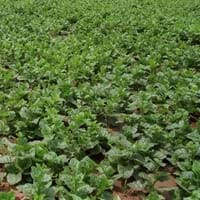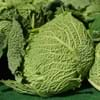Life Span
Perennial
Perennial
Origin
Southeastern Asia, India
World, Pandemic, North America, Europe, Africa, Asia
Types
Red Malabar Spinach, Green Malabar Spinach
Alizes
Bumblebee Deelite
Maui Moonlight
Langport Wren
Sarah Taylor
Titan's Glory
Thornbird
Jane Phillips
Orinoco Flow
Number of Varieties
Not Available
Habitat
Hot climate regions, Humid climates
gardens, Hillside, Riverbanks, Warmer regions, Wet forest
USDA Hardiness Zone
Not Available
Not Available
Sunset Zone
H1, H2, 3a, 3b, 4, 5, 6, 7, 8, 9, 10, 11, 12, 13, 14, 15, 16, 17, 18, 19, 20, 21, 22, 23, 24
Not Available
Habit
Vining/Climbing
Clump-Forming
Minimum Height
Not Available
Minimum Width
Not Available
Flower Color
Red, Green, Orange Red
White, Yellow, Blue, Purple, Orange, Pink, Rose, Coral, Peach, Burgundy, Lavender, Plum, Orange Red, Dark Salmon, Bronze, Chocolate, Black
Flower Color Modifier
Bicolor
Bicolor
Fruit Color
White, Ivory
Not Available
Leaf Color in Spring
Green, Light Green
Not Available
Leaf Color in Summer
Green, Dark Green
Not Available
Leaf Color in Fall
Purple, Gray Green
Not Available
Leaf Color in Winter
Purple, Gray Green
Light Green
Leaf Shape
Heart-shaped
Long Linear
Plant Season
Spring, Summer, Fall, Winter
Not Available
Sunlight
Full Sun, Partial Sun, Partial shade
Full Sun, Partial Sun
Type of Soil
Clay, Loam
Clay, Loam, Sand
The pH of Soil
Neutral
Acidic, Neutral, Alkaline
Soil Drainage
Well drained
Well drained
Bloom Time
Not Available
Not Available
Tolerances
Drought
Drought
Where to Plant?
Ground
Ground, Pot
How to Plant?
Leaf Cutting, Seedlings
From Rhizomes, Stem Planting
Plant Maintenance
Medium
Medium
Watering Requirements
Do not let dry out between waterings, Requires consistently moist soil
Does not require lot of watering, Keep ground moist, Water when soil is dry
In Summer
Average Water
Lots of watering
In Spring
Moderate
Moderate
In Winter
Average Water
Average Water
Soil pH
Neutral
Acidic, Neutral, Alkaline
Soil Type
Clay, Loam
Clay, Loam, Sand
Soil Drainage Capacity
Well drained
Well drained
Sun Exposure
Full Sun, Partial Sun, Partial shade
Full Sun, Partial Sun
Pruning
Remove damaged leaves, Remove dead leaves
Remove dead leaves, Remove dead or diseased plant parts, Requires very little pruning
Fertilizers
Nitrogen
All-Purpose Liquid Fertilizer
Pests and Diseases
Aphids
Bacterial Diseases, Fungal Diseases, Viruses
Plant Tolerance
Drought
Drought
Flower Petal Number
Single
Single
Foliage Texture
Medium
Medium
Foliage Sheen
Glossy
Matte
Attracts
Not Available
Bees, Butterflies
Allergy
Not Available
Asthma
Aesthetic Uses
Not Used For Aesthetic Purpose
Beautification, Showy Purposes
Beauty Benefits
Not Available
Not Available
Environmental Uses
Air purification
Air purification
Medicinal Uses
Folate, Iron, Low calories, Low Fats, Rich in Potassium, ß-carotene, Vitamin A, Vitamin C
No Medicinal Use
Part of Plant Used
Leaves
Flowers, Leaves, Rhizomes, Root
Other Uses
Used As Food
Making Perfumes, Oil is used for aromatherapy, Used as a sedative, Used as essential oil
Used As Indoor Plant
No
No
Used As Outdoor Plant
Yes
Yes
Garden Design
Container, Edible, Groundcover, Herb / Vegetable, Tropical, Vine
Bedding Plant, Cutflower, Mixed Border, Rock Garden, Wall
Botanical Name
BASELLA alba
IRIS
Common Name
Ceylon Spinach, Malabar Spinach, Red Malabar Spinach
Iris
In German
Malabarspinat
Iris
In French
L’épinard de Malabar
Iris
In Spanish
espinaca de Malabar
Iris
In Greek
Malabar Σπανάκι
Ίρις
In Portuguese
Malabar espinafre
Íris
In Polish
Szpinak Malabar
Irys
In Latin
Spinach Malabar
Iris
Phylum
Magnoliophyta
Tracheophyta
Class
Eudicotyledones
Liliopsida
Order
Caryophyllales
Asparagales
Family
Basellaceae
Iridaceae
Clade
Angiosperms, Core eudicots, Eudicots
Angiosperms, Monocots
Tribe
Not Available
Irideae
Subfamily
Not Available
Iridoideae
Number of Species
Not Available
Importance of Malabar Spinach and Iris
Want to have the most appropriate plant for your garden? You might want to know the importance of Malabar Spinach and Iris. Basically, these two plants vary in many aspects. Compare Malabar Spinach and Iris as they differ in many characteristics such as their life, care, benefits, facts, etc. Every gardener must at least have the slightest clue about the plants he wants to plant in his garden. Compare their benefits, which differ in many ways like facts and uses. The medicinal use of Malabar Spinach is Folate, Iron, Low calories, Low Fats, Rich in Potassium, ß-carotene, Vitamin A and Vitamin C whereas of Iris is No Medicinal Use. Malabar Spinach has beauty benefits as follows: Not Available while Iris has beauty benefits as follows: Not Available.
Compare Facts of Malabar Spinach vs Iris
How to choose the best garden plant for your garden depending upon its facts? Here garden plant comparison will help you to solve this query. Compare the facts of Malabar Spinach vs Iris and know which one to choose. As garden plants have benefits and other uses, allergy is also a major drawback of plants for some people. Allergic reactions of Malabar Spinach are Not Available whereas of Iris have Asthma respectively. Having a fruit bearing plant in your garden can be a plus point of your garden. Malabar Spinach has showy fruits and Iris has no showy fruits. Also Malabar Spinach is not flowering and Iris is flowering. You can compare Malabar Spinach and Iris facts and facts of other plants too.





